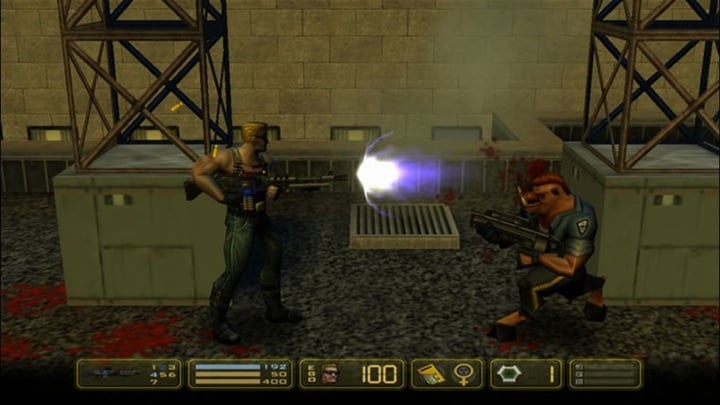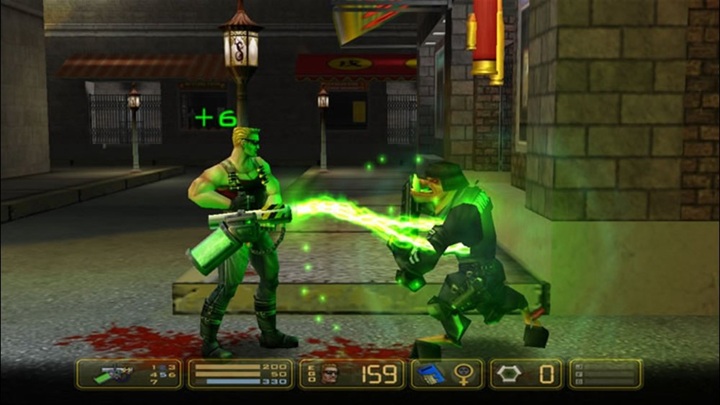
To me, the year 2002 holds significant importance. That’s when I acquired my very first computer, marking a turning point in my life. It happened in mid-August, and it was all about expanding my knowledge (of course!). From then on, I began to diligently prepare myself for the moment I would type on my own keyboard for the first time. As January approached, I found myself immersed in magazines from that era, fostering a growing passion for video games.
Around the onset of spring, I received initial news about the legendary Duke Nukem Forever, which was said to be the greatest game ever made. Despite being in development, it was already evident that it would surpass anything that preceded and followed it. Can you imagine my shock when only a few weeks later, I stumbled upon a review of another Duke Nukem game, and soon after, played it on a friend’s computer (and eventually, mine as well)! However, it wasn’t the same title, but if DNF is supposed to be the savior of video games, then its Manhattan adventure must have been at least spectacular, right?
From that moment on, my affection for Duke Nukem: Manhattan Project took root. It’s amazing to think it’s been 23 years since then (hard to believe!), but my mind continues to experience this game through the lens of nostalgic memories tied to exploring the “exciting, unknown territory” that the video game world represented for me back then. So, what was it truly like? Let’s dive into the exploits Duke had in Manhattan.
Back to the roots… but not quite
In the year 2002, many gamers were familiar with Duke Nukem mainly due to the iconic first-person shooter game, Duke Nukem 3D. However, the original Duke Nukem game was actually an action platformer. As a result, Duke Nukem: Manhattan Project could be considered a return to the series’ roots. Not everyone was thrilled with this shift in direction, especially those anticipating Duke Nukem Forever. Nevertheless, I found this format appealing. This preference stemmed from my early days as a computer gamer, where I was raised on games like Pegasus (and consequently Contra, Robocop, and other shooters). Therefore, side-scrolling games such as Duke Nukem: Manhattan Project felt familiar to me.
Essentially, the game in question featured 3D graphics and shifting camera angles to show action from multiple viewpoints, making it resemble a movie to me. However, experienced gamers might consider this just an attractive visual environment. A novice gamer, similar to my younger self, might appreciate the game for its high level of violence. Adjusting the “Slaughter” setting to off is an option, but who would realistically do that? After all, we’ve witnessed more extreme content in games like Carmageddon.

Well-known and liked mechanic
In Duke Nukem: Manhattan Project, the developers didn’t aim for a revolutionary approach but instead built upon reliable game mechanics. As such, the titular hero found himself traipsing through Manhattan, leaping over platforms, dodging hazards, and clashing with adversaries. The main character was armed with a mix of familiar weapons and innovative firearms. Among his arsenal were a revolver, shotgun, machine gun, and grenade launcher.
In the story, Duke predominantly battled genetically altered beasts such as pigs, alligators, and cockroaches. Moreover, he had access to his favorite weapon, the X-3000 cannon, which emits a ray that transforms enemies back into their original, vulnerable forms – making them easy targets for kicks or other physical attacks. Additionally, Duke encountered other adversaries, including the dominant Fem-Mechs, who were female-like androids armed with whips.
Here’s another way of expressing that sentence: There’s still more to this story, as Duke has the ability to fly using a jetpack, enabling him to soar above the ground and access difficult-to-reach heights.

Duke to the rescue
In the video game titled “Duke Nukem: Manhattan Project“, our primary objective revolved around thwarting Mech Morphix, a villain who was tinkering with radioactive matter and transforming it into mutants to conquer New York City using their assistance. As Duke traced Morphix’s footsteps, he navigated more than just the rooftops of skyscrapers; he also ventured through canals, subways, an industrial facility, a tanker, a drilling platform, and even a space station. The game was structured into various levels, and at the conclusion of each level, Duke had to vanquish a boss in order to free a captive woman.
The game offered a mix of play styles with occasional environmental challenges, though they were straightforward. There was limited scope for character progression, as acquiring ten power-ups labeled “Nukes” boosted our hero’s resilience. Developers creatively tackled the challenge of the protagonist’s health, similar to Nathan Drake in the Uncharted series who perishes with a single accurate shot after exhausting his luck.
Nevertheless, when Duke was being struck, it wasn’t his physical self that endured pain, but rather his massive PRIDE. Furthermore, this pride of his was at least as large as him, a fact he boldly demonstrated through his sarcastic quips, a characteristic trait of his.

What happened next and how to play Duke Nukem: Manhattan Project today?
The Duke Nukem: Manhattan Project game was enthusiastically accepted by players and critics, but unfortunately, it never had a follow-up. To add insult to injury, as I write this, the game is no longer available for purchase on Steam or GOG.com. A used boxed edition of the game can be found for at least $7.
Luckily, the title mentioned was released on Xbox 360 in 2010 as well, and you can now find it listed for purchase in the Microsoft Store at a price of $9.99. Notably, this game is also playable on Xbox One and Series X/S consoles.
Read More
- Who Is Harley Wallace? The Heartbreaking Truth Behind Bring Her Back’s Dedication
- 50 Ankle Break & Score Sound ID Codes for Basketball Zero
- 50 Goal Sound ID Codes for Blue Lock Rivals
- KPop Demon Hunters: Real Ages Revealed?!
- 100 Most-Watched TV Series of 2024-25 Across Streaming, Broadcast and Cable: ‘Squid Game’ Leads This Season’s Rankers
- Elden Ring Nightreign Enhanced Boss Arrives in Surprise Update
- Ultimate AI Limit Beginner’s Guide [Best Stats, Gear, Weapons & More]
- Lottery apologizes after thousands mistakenly told they won millions
- Mirren Star Legends Tier List [Global Release] (May 2025)
- How to play Delta Force Black Hawk Down campaign solo. Single player Explained
2025-07-05 21:32